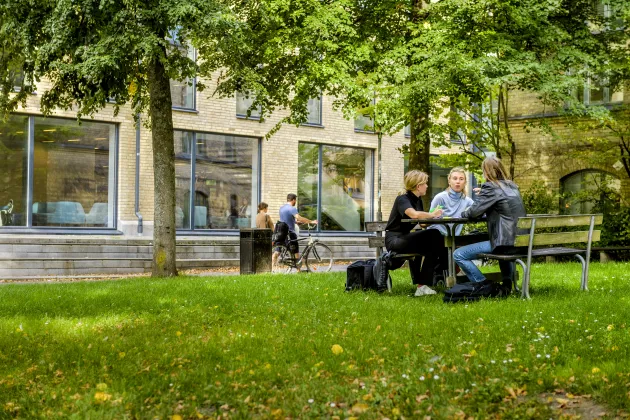For two years, the Campus Development Office has been drawing up the Campus Plan in collaboration with consultants and on behalf the Campus Development Council. The Campus Plan covers a lot of space – Lund University has around 540,000 square metres of premises at its disposal.
The process has included several workshops during which representatives from the organisation have discussed the focus areas for future learning environments, the campus as resource, sustainable workplaces and external engagement.
These thematic workshops were complemented by geographical discussions with the University’s various campuses according to their requirements and specific characters. At these meetings, cooperation with the relevant municipalities (and property owners) has been important in the discussions about how to create an attractive student city.
The Campus Plan is now beginning to take shape and will be sent on a consultation round in the autumn to give all the faculties the chance to express their opinions. The University Board will take a decision on the Campus Plan in December 2024. The Campus Plan has a horizon set at 2050, although it may be necessary to update it in the meantime. We already know that our campus will be affected by changes close to us, such as the University Hospital’s move to Smörlyckan, planned for 2045.
Strategy shift
The aim of the Campus Plan is for it to be designed to serve as a support and hold a steady course in a changing world. It is to contribute to a resource-efficient use of the University’s premises and outdoor spaces while at the same time enabling future expansion of the University for decades to come.
A lot has happened since the most recent Campus Plan, covering the years 2012-2026, and strategies have been adjusted somewhat. For example, today we see that students spend much more time on campus than previously and have greater need of study spaces, food options etc. The environment of the city and campus have an increased role in students’ choice of higher education institution. At the same time, staff attendance on campus has declined after the pandemic, with an increased number choosing to work from home for part of their working hours.
Currently, work is ongoing on a proposal for five updated strategies:
- Campus around the clock
- The University as an urban environment – more settings and functions shared with the city
- Density and proximity in active nodes – binding the campus together
- Making the University’s character visible – ‘growth rings’, architectural quality and complete environments
- Outdoor space and greenery as prioritised resources
All the strategies are to have sustainability as a consistent theme. The proposed strategies underline that the University is to cooperate with the municipality to create an attractive urban environment made up of shared backdrops. The municipality is responsible for the environments that the University’s students and employees depend on, such as accommodation, service, public transport, the arts and more. In return, the University’s character contributes strongly to the cityscape and our cultural activities, Botan, the museums and Gerdahallen bring activities and contexts to the city. The Campus Plan includes efforts to retain the University’s historical ‘growth rings’ and to find new areas of use for our fine old famous buildings.
The Campus Plan also raises the idea of nodes within the city, that will tie the University together in order to make the campus visible and use outdoor space in a way that is attractive to students.
The Campus Plan has a long, 25-year perspective and is to give space for future needs for expansion. At the same time, it has to take account of the fact that rents are a difficult expense for many organisations and several faculties are considering closing premises.
Read more: Campus development | Lund University


